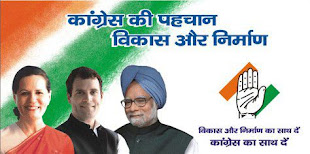Firdaus Khan
New Delhi. Being an Indian today is considered as a risk factor for heart disease. International studies have shown that an Indian doctor settled in US is 17 times more prone to get a heart attack than an American doctor settled in America, said Dr. K K Aggarwal, President, Heart Care Foundation of India and Editor eMedinewS.
Indian also get the disease at an earlier age. One should take lessons from the sudden deaths of prominent people like Vinod Mehra, Dewang Mehta, Amzad Khan, Sanjiv Kumar. They all died with massive heart attack within hours of the onset of symptoms while they were young and at the peak of their career. Saif Ali Khan also suffered a similar coronary attack but could be revived because of the modern gadgets and drugs available. Coronary artery disease in people less than 45 years of age is quite common in the country and needs aggressive management. Their first degree relatives should also be evaluated to prevent future heart disease in them.
Children whose fathers had suffered a heart attack before the age of 55 or mothers before the age of 65 should also be subjected to vigorous investigations to rule out underlying heart disease. In men less than 45 years of age and all pre menopausal women, one should look for possible heart blockages if they have associated risk factors. it is ironical that women who are normally protected from getting a heart attack are getting it today because of a continued faulty lifestyle. Heart attack in women is more serious, severe and fatal. Deaths due to heart disease in women outgrow all the combined deaths due to all cancers in women in the country today.
Younger patients with heart blockages have more abnormal atherogenic lipid profile, higher prevalence of smoking and more frequent single vessel coronary blockage disease. In a data of 1000 patients undergoing angiography, it was shown that 84% of patients undergoing angiography were males. Only 16% women underwent angiography. Amongst those who underwent angiography diabetes was present in 47% men, 52% women;
hypertension in 71% of patients (male & female equal); abnormal lipid profile in 94% women and 85% men; family history of heart disease in 30% women and 19% men; and one more family member having heart blockage was present in 63% women and 54% men. Only 10% of patients were smokers and 6% of them were younger than 45 years of age.
The risk factors for Indians are different from that of the West. Dr. Enas Ea from Florida has shown that Asian Indians all over the world have the highest rate of heart blockages despite the fact that nearly 50% of them are vegetarians. The disease in them not only occurs earlier, but also takes a more malignant course. The classical risk factors like smoking, blood pressure and diabetes are present in less number than in their Western counterparts. The main risk factors in Indians are high triglycerides, low HDL and good cholesterol, high insulin levels, apple-shaped abdominal obesity and high Lp (A) cholesterol levels.
Many studies have shown that the relations of heart patients also demonstrate metabolic blood abnormalities. Children from 5 to 18 years of age group of young parents of less than 45 years of age with coronary blockages, showed relatives significant cholesterol, sugar, blood pressure and insulin level abnormalities in the relatives. The levels were significantly higher as compared to controls. Aggressive modification of lifestyle, therefore, should begin in adolescents in view of malignant nature of coronary blockages in this population.
Coronary blockages also follow different incidence patterns in different areas in the country. Kerala has one of the highest incidences. In north, it is highly prevalent in Punjabi Bhatia family. Dr. R Gupta from Jaipur has shown high prevalence of abdominal obesity, blood pressure, diabetes, metabolic syndrome in Punjabi Bhatia community. Asian Indian women also have a higher rate of coronary blockages than other ethnic groups, despite similar conventional risk factors. Bhalodkar and coauthors from New York have shown that Asian Indian women have smaller particle size of good cholesterol and high levels of triglyceride.


























0 Comments